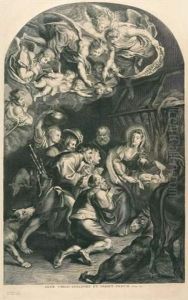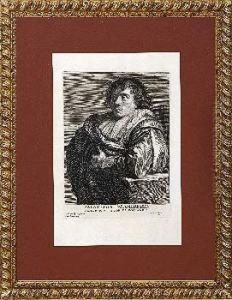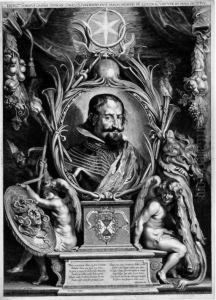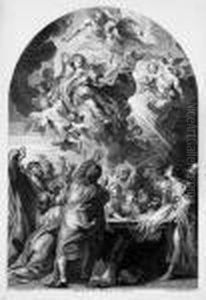Paulus Pontius Paintings
Paulus Pontius was a Flemish engraver and printmaker, born in Antwerp in 1603. He was one of the leading engravers of the Baroque period and was known for his skilled reproductions of the works of Peter Paul Rubens, among other artists.
Pontius studied under the notable engraver Lucas Vorsterman, who was himself a prominent figure in the engraving community and a collaborator with Rubens. Pontius's ties with Rubens were significant, as he became one of Rubens's most faithful interpreters through engravings. His reproductions of Rubens's work played a crucial role in spreading the fame of Rubens's artworks throughout Europe.
Not limited to reproductions, Pontius also produced original portraits and various subjects. He had a refined technique and was adept at capturing the subtleties of light and shadow, which added a dramatic effect to his engravings. His attention to detail and ability to translate the grandeur of Baroque painting into the medium of print made his work highly sought after.
Pontius became a master in the Guild of Saint Luke, the guild for artists and artisans in Antwerp, by 1626, which marked his acceptance as a recognized professional in the field. Throughout his career, he worked with other notable artists of the time, including Anthony van Dyck and Jacob Jordaens.
The collaboration between Pontius and these leading artists of the Flemish Baroque not only contributed to his professional growth but also helped disseminate the Baroque style. His work, therefore, is not merely a reflection of his own artistic abilities but also a testament to the collaborative and dynamic nature of the art world in 17th-century Flanders.
Paulus Pontius died in Antwerp in 1658. His legacy is preserved in the numerous prints that survive him, which continue to be studied and admired for their technical excellence and their role in the history of European art.




















